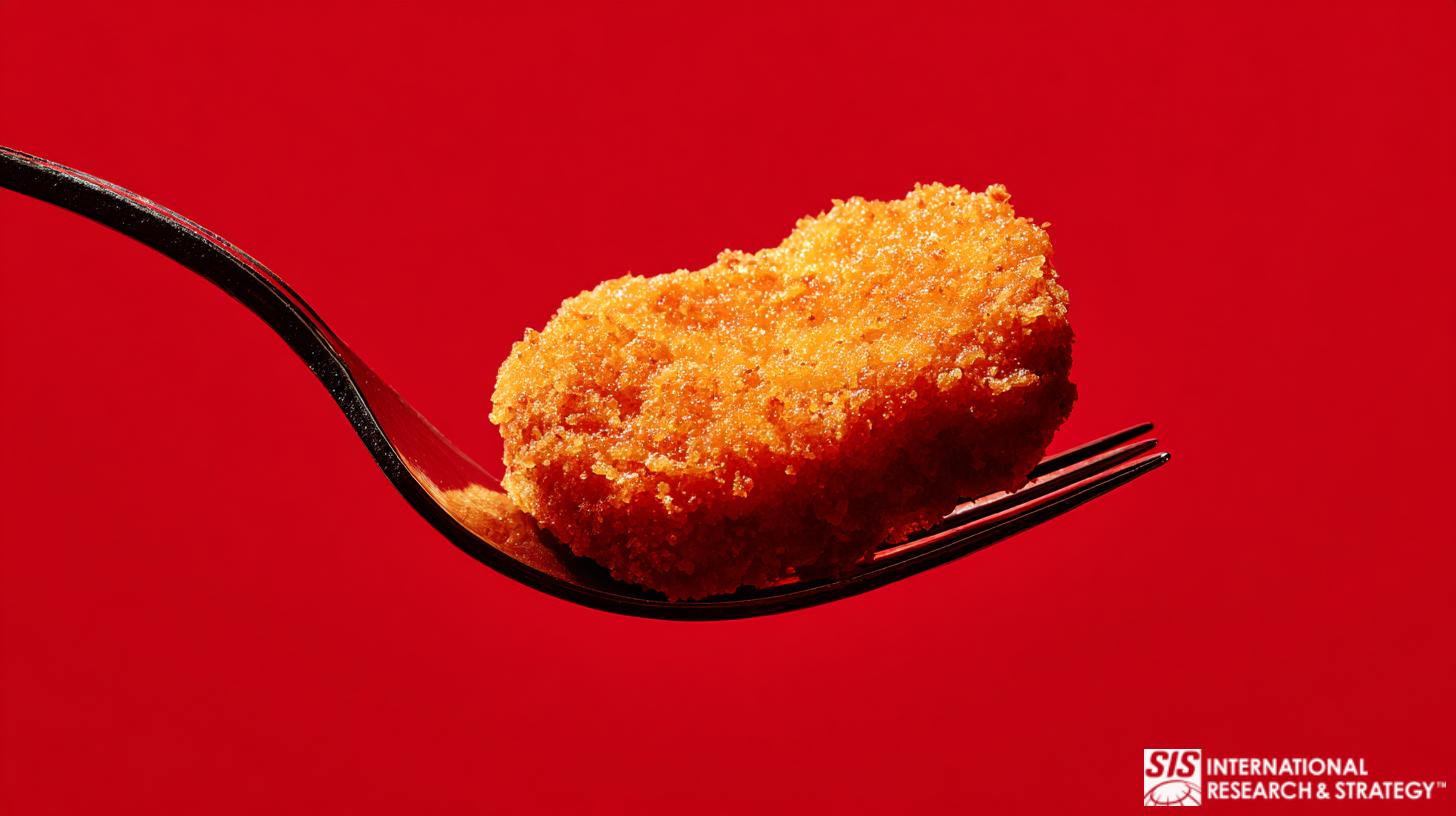Marktonderzoek naar kant-en-klare voeding (RTE)

Did you know the global ready-to-eat food market will reach a staggering value in the coming years? As consumer demands evolve and the global food landscape shifts, businesses in the food sector must constantly reassess their strategies. Among these shifts, the rise of the ready-to-eat food (RTE) market research stands out, offering both opportunities and challenges to entrepreneurs and seasoned businesses alike.
By delving deep into consumers’ preferences, habits, and desires, this research aims to illuminate the path for businesses eager to carve out their niche or solidify their dominance in the ready-to-eat food market.
Why Conduct Ready-to-Eat Food (RTE) Market Research?
The rapid evolution of the global food sector, driven by technological advancements and changing consumer lifestyles, has elevated the significance of specific market research. Ready-to-eat food market research, in this context, plays a pivotal role for several reasons:
- Inzicht in consumentenvoorkeuren: The ready-to-eat food segment is diverse. From pre-packaged salads to microwaveable dinners, each product caters to different demographics and preferences. Conducting ready-to-eat food market research helps brands pinpoint precisely what flavors, ingredients, and packaging styles resonate with their target audience.
- Aanpassen aan veranderende trends: The food industry is highly volatile. What’s popular today might fall out of favor tomorrow. Regular ready-to-eat food market research ensures businesses stay ahead of the curve, adapting their product lines as trends shift.
- Risicobeperking: Entering the market with a new product or tweaking an existing one without proper research can be a costly bet. Ready-to-eat food market research acts as a safety net, highlighting potential pitfalls and areas of concern.
- Optimizing Supply Chain Management: By understanding which products are in demand and which regions, companies can streamline their supply chain, ensuring timely deliveries and reducing wastage.
- Effective Marketing and Promotion: With market research data, brands can craft more effective marketing campaigns. For instance, if research shows a trend toward health-conscious eating, a brand can highlight the nutritional benefits of its ready-to-eat products in advertising.
- Pricing Strategy Development: Through ready-to-eat food market research, companies can gauge consumer price sensitivity and identify the optimal price point to maximize profits while ensuring customer satisfaction.
- Concurrentieanalyse: Ready-to-eat food market research provides insights into what competitors are doing, allowing businesses to identify gaps in the market or areas where they can gain a competitive edge.
The Role of Digitalization in Ready-to-Eat Food (RTE) Market Research

In an era where almost every facet of our lives is intertwined with technology, digitalization has revolutionized the way businesses conduct market research, especially in the ready-to-eat food sector. Here’s how:
- Wider Reach through Online Surveys: Digital surveys can reach a more extensive and diverse audience across different geographies. They are cost-effective and can be tailored quickly to tap into emerging trends or concerns.
- Social Media Insights: Platforms like X, Instagram, and Facebook have become treasure troves of data. Analyzing mentions, hashtags, and trends related to ready-to-eat products can offer invaluable insights into consumer preferences, dislikes, and emerging patterns.
- Engaging with Online Focus Groups: Video conferencing tools and specialized online platforms now enable businesses to conduct focus group sessions remotely. This not only saves costs but also allows for a broader demographic reach.
- Use of Artificial Intelligence (AI) and Machine Learning: These technologies help in predictive analysis. For instance, AI can predict potential future trends in the ready-to-eat food segment based on current and past data, helping businesses stay ahead of the curve.
- Online Sales Data Analysis: E-commerce platforms and online delivery services offer rich data on sales, preferences, and consumer habits. This data, when analyzed, can reveal patterns like which products are most popular at different times of the day or week.
- Interactive and Immersive Experiences: Virtual Reality (VR) and Augmented Reality (AR) can be used for product testing and feedback. For instance, a consumer could use AR to see how a ready-to-eat meal looks when served, providing feedback before the product hits the shelves.
- Enhanced Customer Relationship Management (CRM) Tools: Modern CRM systems, integrated with AI, can provide businesses with detailed consumer profiles, helping them tailor their products and marketing strategies to specific segments of their audience.
Opportunities in Ready-to-Eat Food Market Research
The RTE food sector is expanding rapidly, driven by changing consumer lifestyles, urbanization, and technological advancements. As a result, the scope of ready-to-eat food market research offers many opportunities for both businesses and researchers alike. Here are some key opportunities:
- New Product Development: With a clear understanding of consumer preferences, brands can develop innovative RTE products that cater to specific needs. Whether it is gluten-free meals, keto-friendly snacks, or regional delicacies.
- Sustainable Packaging Innovations: As environmental concerns grow, there is a surge in demand for sustainable packaging. Ready-to-eat food market research can help businesses understand consumer willingness to pay for eco-friendly packaging and the types of sustainable materials they prefer.
- Health and Nutrition: With the rising trend of health consciousness, there is an opportunity to develop RTE foods fortified with vitamins, minerals, and other essential nutrients. Ready-to-eat food market research can identify specific health trends, like plant-based diets or protein-rich meals, that brands can leverage.
- Wereldwijde expansie: As brands look to expand globally, market research can help identify which regions or countries have a demand for specific RTE foods, helping businesses tailor their offerings to local tastes and preferences.
- Subscription Models: With the success of subscription boxes in various sectors, there is potential in the RTE market too. Ready-to-eat food market research can guide businesses on the types of subscription models, be it weekly meal kits or monthly snack boxes, that might resonate with their target audience.
- Samenwerkingen en partnerschappen: By understanding market trends, businesses can identify potential collaboration opportunities, whether it is with fitness brands, health apps, or even celebrities, to boost the appeal and reach of their RTE products.
- Op maat gemaakte marketingstrategieën: Based on consumer demographics, behaviors, and preferences, ready-to-eat food market research can guide the development of highly targeted and effective marketing campaigns, leveraging both digital and traditional channels.
Challenges in Ready-to-Eat Food Market Research

While the RTE food sector presents several opportunities, it is also riddled with challenges, especially when it comes to market research. These challenges can influence the accuracy, relevancy, and effectiveness of the insights garnered. Here are some of the notable challenges in ready-to-eat food market research:
- Rapidly Changing Consumer Preferences: The food industry is characterized by swiftly evolving trends. What’s in vogue today might become obsolete tomorrow. Keeping pace with such fast-changing preferences can be daunting for researchers.
- Culturele en regionale nuances: As brands expand globally, understanding the diverse cultural and regional tastes becomes essential. Capturing the essence of local preferences accurately is challenging but crucial.
- Gezondheids- en veiligheidszorgen: Post-pandemic, consumers are more cautious about the safety and hygiene of RTE foods. Addressing and researching these concerns without inducing fear or skepticism can be tricky.
- Environmental and Ethical Concerns: As consumers become more environmentally conscious, addressing concerns about sustainable packaging, ethical sourcing, and wastage becomes a challenge in market research.
- Short Shelf Life: Unlike other products, RTE foods generally have a shorter shelf life. This adds pressure to ensure that research is timely, and insights can be implemented before products lose their freshness.
- Competition Analysis: The RTE sector is fiercely competitive. Accurately assessing the strategies, strengths, and weaknesses of numerous competitors can be a monumental task.
- Wijzigingen in de regelgeving: Different regions have varied regulations regarding food safety, labeling, and ingredients. Keeping abreast of these changing regulations during research is essential to ensure compliance.
- Balancing Quality and Affordability: Consumers demand high-quality products but are often price-sensitive. Researching and finding the sweet spot between quality and affordability can be challenging.

